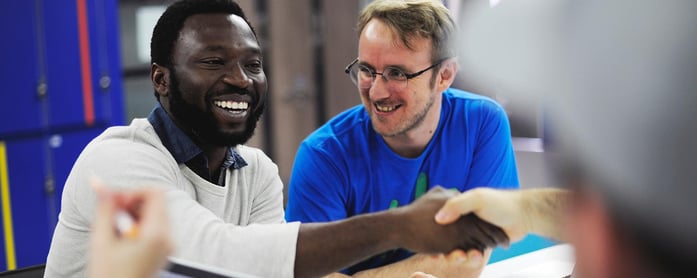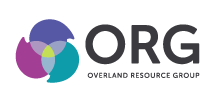
From The Chicago Bulls to The Beatles, there’s one special thing that great teams have in common – chemistry. The way different personalities come together in the right way at the right time is where the magic of teamwork happens.

Most people agree that great teamwork is foundational to the success of an organization. So the question for leaders becomes, how can we create this chemistry within our organizational teams?
Let’s step into the lab and see what ingredients act as the catalysts for amazing teams.
INGREDIENT #1: PERSONALITY ASSESSMENT
It’s important to recognize that teams are made up of individuals. Each team can have different compositions depending on a mix of individual personalities.
Identifying the types of personalities that exist within the team is the first step to understanding the best ways for teammates to communicate more effectively and work together better.
BUILDING BETTER TEAMS
Using the DISC Personality Assessment tool can shed some light on how team members interact with each other naturally. From there, you can discern strengths to capitalize on, as well as prepare the team to effectively navigate areas where conflict might arise.
The DISC assessment test usually takes about 5 to 10 minutes. You will be asked to select which of the four choices provided in each section is “most like you” and which is “least like you.”
The assessment uses these rankings to identify behavioral profiles that exist within the team. There are four main categories: Dominance, Influence, Steadiness, and Conscientiousness. Individual scores in these categories indicate what roles they might naturally assume in team situations and what type of personality traits they may exhibit.
When put together in the right mix, different personality types can work really well together. But more often than not, teams are formed without giving consideration to the chemistry involved – which is why situations can become volatile!
Imagine a team comprised of all drivers and influencers – a room full outgoing and visionary personalities may spend more time vying for control or arguing than actually getting things done. In the same way, a team full of stabilizers and analyzers may be great at considering things from all sides, but have trouble making decisions or moving forward.
The best teams usually have representation from each personality type, but even when that’s not possible, the DISC assessment can offer helpful insights.
INGREDIENT #2: UNDERSTANDING EACH OTHER
The next step is to help individuals better understand their own tendencies, as well as the personalities of their teammates. ORG has developed a unique tool to help teams clearly see how the personalities fit together and balance each other out – the DISC heat map.
The heat map plots individual profiles in a quadrant, according to their primary team role (Driver, Influencer, Stabilizer, Conscientiousness). This allows teams to quickly and visually identify the mix of their team, both under normal functioning and when under stress.
It may not always be possible to have a perfectly balanced mix, so it’s helpful to think through different types of interactions. For example, a confident, driver personality may be naturally inclined to overpower a cooperative, stabilizer personality. But when both are aware of this dynamic, they can work toward balancing these tendencies harmoniously for a more positive, productive meeting or project.
INGREDIENT #3: CONSIDERING THE GROUP DYNAMIC
Once you understand the way individual team members are wired, and the way this shows up when interacting with other personalities, you can apply this to a larger group.
Adding more people to the mix increases the chance of representation of each profile in the team. Ideally, teams are built with balance in mind. But no matter what combination you end up with, when a team understands where each individual is coming from, it’s easier to work together.
There’s No Such Thing as a Perfect Team
Even with the perfect balance of personality types, people are complex and conflict can still arise. Keep these tips in mind for the best possible result:
- Recognize the differences that exist
- Learn how to work with other personalities — both one-on-one and in a group
- Be willing to modify your own behavior to work with others
- Formulate your meeting strategy based on who will be there
- Tailor your communication to meet the needs of group members
BE PART OF THE SOLUTION (LEAD WITHOUT BEING A LEADER)
In chemistry, a solution is a homogeneous mixture of two or more substances. In team chemistry, the best solution is to balance the mixture of personalities, as well as learn how to mitigate differences with mutual understanding.
When problems arise, leaders often feel burdened to step in and provide a solution. But often it’s better to be part of the solution by finding your place within the team dynamic and leading by example.
Why not see for yourself? It all begins by assessing individual strengths and learning how they best interact, from there, you’re well on your way to great team chemistry.
Interested in building highly productive teams?
ORG has decades of experience in helping organizations learn to collaborate. DISC Personality Assessments and Heat Maps are a few of the many proven tools we’ve used to help our clients learn to build better teams that work better together. Get started today


